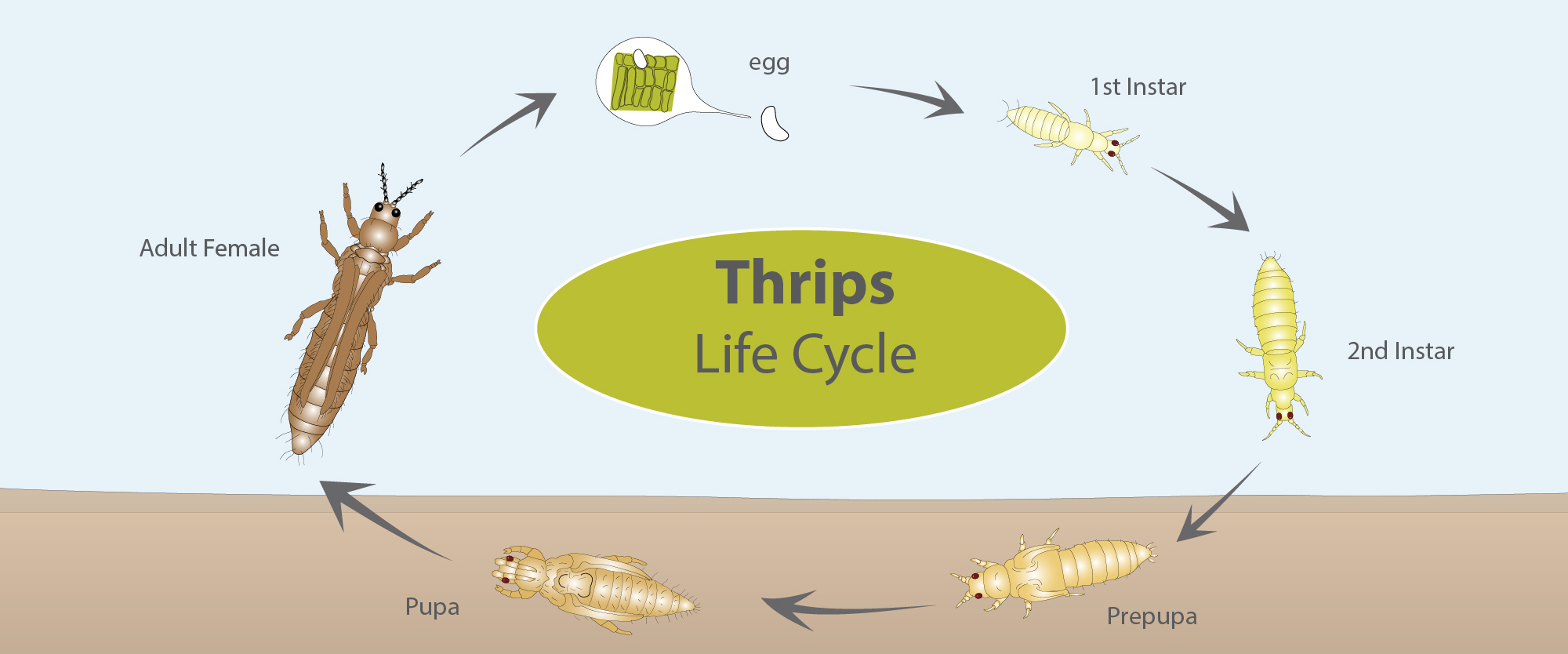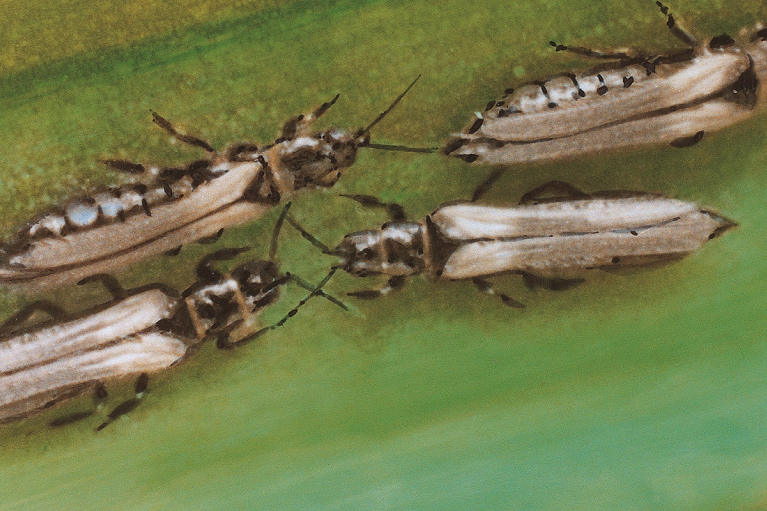onion thrips life cycle
Thrips tabaci Lindeman Order. Key thrips lifecycle facts.
Life cycle and appearance of Onion thrips Onion thrips Thrips tabaci develops in six stages.

. In Utah females reproduce asexually parthenogenesis and insert eggs individually into leaves. Females can reproduce without mating and lay eggs on the undersides of leaves. Under normal temperatures during a growing season thrips can complete a generation in about 2-3 weeks.
Adult females and nymphs. Offspring per cycle 20 to 50. Nymphal stages are similar to adults but do not have fully developed wings.
Thrips have several generations up to about eight a year. Egg two larval instars prepupa pupa and finally the adult insect. Onion thrips is the dominant thrips species in onion fields.
They overwinter as adults and become active in the spring dispersing into onion fields. The legs end in a small bladder not claws. Eggs hatch after five to 10 days.
They become active in early spring and lay eggs in plant tissue. This video show the life. Thrips lifespan 45 days as an adult not including hibernation.
After two molts the larva enters the pre-pupal stage lasts about 1 day during which wing buds are developing externally. Under controlled environment all the regions. Nymphs hatch out within 4-9 days.
Shortest during of life cycle have been recorded during April about 14 days and longest in December about 23 days. Life cycle and appearance of Onion thrips Onion thrips Thrips tabaci develops in six stages. Adults insert their eggs into plant tissues.
Onion thrips overwinter in legume eg alfalfa and grain eg wheat fields in weedy areas and in onion bulbs not removed from onion fields. Onion thrips have an extremely wide host range. Onion thrips 117 - Worldwide distribution.
On onions a preferred host but infestations also occur on onion relatives beans brassicas carrot cotton cucurbits legumes papaya pineapple potato tobacco tomato and many ornamentals. The eggs of the onion thrips Thrips tabaci are laid in leaves flower petals and in the soft parts of stalks. Onion thrips life cycle and crop damage Oct Apr.
Onion thrips do not need to mate in order to reproduce. An Introduction to Thrips Variations in the length of each life stage occur between thrips species but in general. Life cycle is completed in 11 to 21 days.
Life cycle of Onion thrips. These eggs hatch after 35 days and the nymphs then feed for 13 weeks before resting to molt in 12 weeks. Onion thrips have six to ten generations depending on temperature.
Some thrips such as onion thrips and western flower thrips can transmit plant viruses. Active during daytime. The entire life cycle from egg to adult is about 11 days at 30.
The entire life cycle from egg to adult is about 11 days at 30C. The Basic Local Alignment Search Tool BLAST finds regions of local similarity between sequences. When thrips feed on developing tissues at the shoot tip or in flower buds they are can cause distorted growth.
The first two nymphthrips al stages feed on plants. Onion thrips prevail in cotton near onion fields. Onion thrips are the most injurious insect pest to onions in Utah.
Eggs hatch after 5-10 days and nymphs are full grown within 15-30 days. Eggs hatch after 510 days and Onion Thrips KA. However they will also overwinter in other locations such as on winter cereals.
Total cultivation cycle of 110-120 days. Egg two larval instars prepupa pupa and finally the adult insect. Life cycle and appearance of Onion thrips Onion thrips Thrips tabaci develops in six stages.
Egg larval prepupal pupal and adult. Adult females have slender yellowish 125 inch-long bodies with hair-fringed wings held over their backs when at rest. This video show the life cycle of onion thrips which has six life stages egg first and second nymph pre pupa pupa and adult with images.
They become active during warm days in spring and are present until cold weather in Fall. The life cycle consists of five stages. In the UK onion thrips overwinter in the adult stage and prefer host vegetable crops such as leek.
Females can reproduce without mating and lay eggs on the undersides of leaves. Hatching takes place within 6-8 days. At 20C development from egg to adult takes approximately 19 days.
Spring Onion St Johns Wort Stevia. Adults have narrow wings fringed with hairs and can drift long distances in the wind. Delahaut A3721-E GARDEN FACTS Onion Thrips.
In the thrips life cycle egg-to-adult development takes about 16 days. Life cycle Adults and nymphs overwinter on plants debris or along weedy field edges. Pupae and prepupae overwinter in the soil.
The first two thrips nymphal stages feed on plants. However the females which do not mate produce females only. Insecticides are a major tool for their control but thrips are prone to.
Moderate to severe thrips feeding causes reduced bulb size. Eggs hatch after five to 10 days. They feed and can reproduce on several cultivated crops including onion cotton beans fruits vegetables and practically all small grains.
Photos 2-4 and about 15 mm long. The eggs of the onion thrips Thrips tabaci are laid in leaves flower petals and in the soft parts of stalks. Thrips are not strong fliers but they move short distances a few metres from dying weeds to crop plants and over long distances tens or hundreds of kilometres when large numbers are caught in warm updrafts.
Onion thrips overwinter in legume and grain fields and along weedy field edges. Eggs are laid singly and inserted in the leaves of host plant through the slit made by ovipositors of the female. Population increase occurs at its peak during April-May.
Larvae emerge and begin to feed on the plant. Eggs inserted into the plant tissue by the females sharp egg-laying tube. Onion thrips overwinter in legumeeg alfalfa and grain eg wheat fields in weedy areas and in onion bulbs not removed from onion fields.
Generations per year up to 40. Females can reproduce without mating and lay eggs beneath the leafs surface. Onion thrips are also vectors of plant viruses such as the tomato spotted wilt virus.
Flower petals are marked by a white flecking where the pigments have been lost and heavy feeding damage may prevent flower buds from opening. Females can repro-duce without mating and lay eggs beneath the leafs surface. Immature and adult thrips prefer to feed on young leaves in the inner neck of plants.
Females are capable of producing eggs asexually if they lack a mate. Identification and life cycleseasonal history Onion thrips Thrips tabaci spend the winter as an adult in protected areas such as under plant debris. Females deposit eggs directly in the host tissue.
Type of reproduction sexual male female oviparity egg-laying In exceptional cases asexual parthenogenesis and live birth. Thrips can have up to 15 generations per year outdoors. Adults and larvae overwinter in the soil or plant litter on the ground.
Female adult western flower thrips live up to 30 days and lay 2-10 eggs per day. At 25C it takes 13 days.

Thrips Management Alternatives In The Field Semantic Scholar
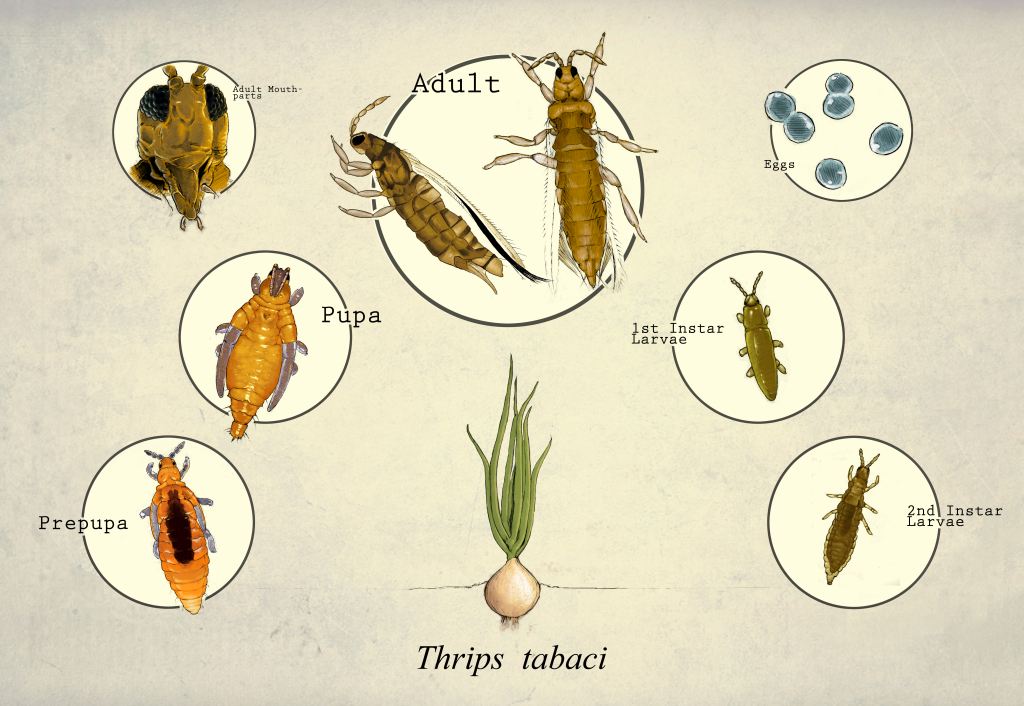
Wsu Vegetable Pathology Program

Biology And Management Of Thrips Affecting The Production Nursery And Landscape Uga Cooperative Extension

Thysanoptera An Overview Sciencedirect Topics

Life Cycle Of Onion Thrips Youtube
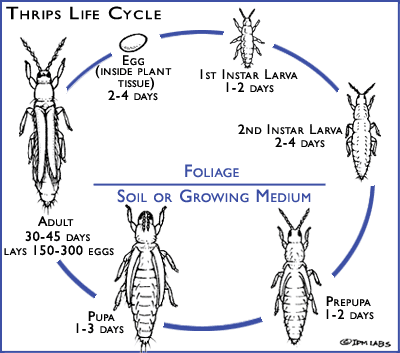
Critters Down Under Thrips Pro Mix Greenhouse Growing
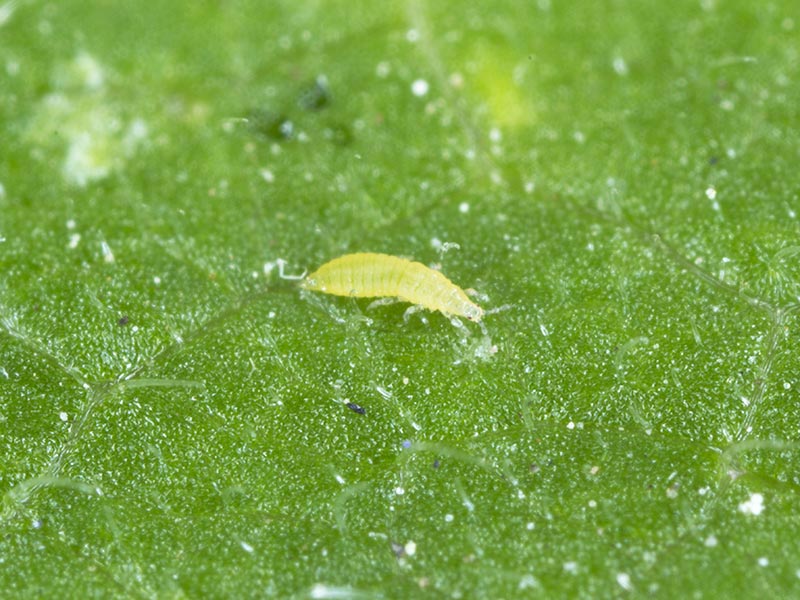
Critters Down Under Thrips Pro Mix Greenhouse Growing

Complete Life Cycle Of Onion Thrip Of 1 Year Download Scientific Diagram

How To Identify The Damage Of Onion Thrips In Onion Plants Youtube

Thrips Damage And Control Cropaia

Thrips Life Cycle Thrips Control Thrip Killer
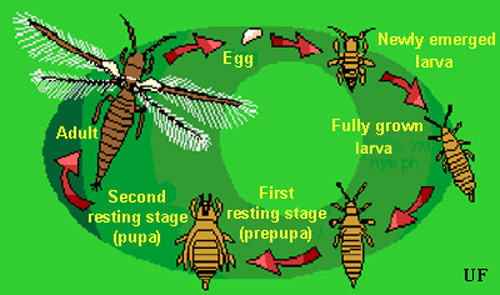
Melon Thrips Thrips Palmi Karny

